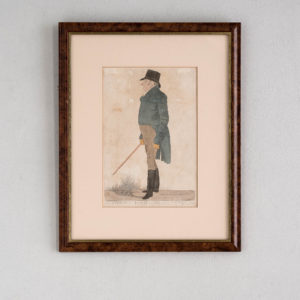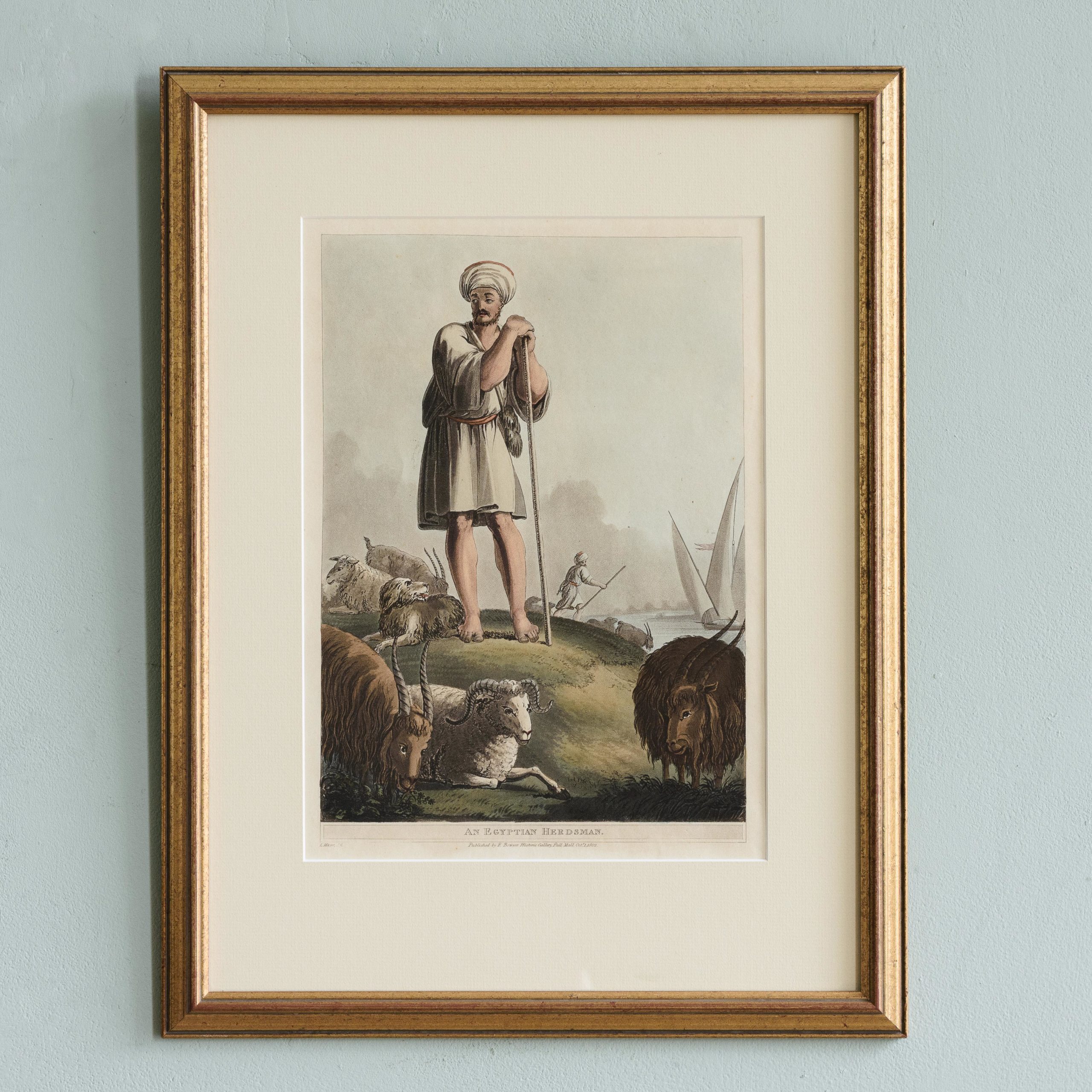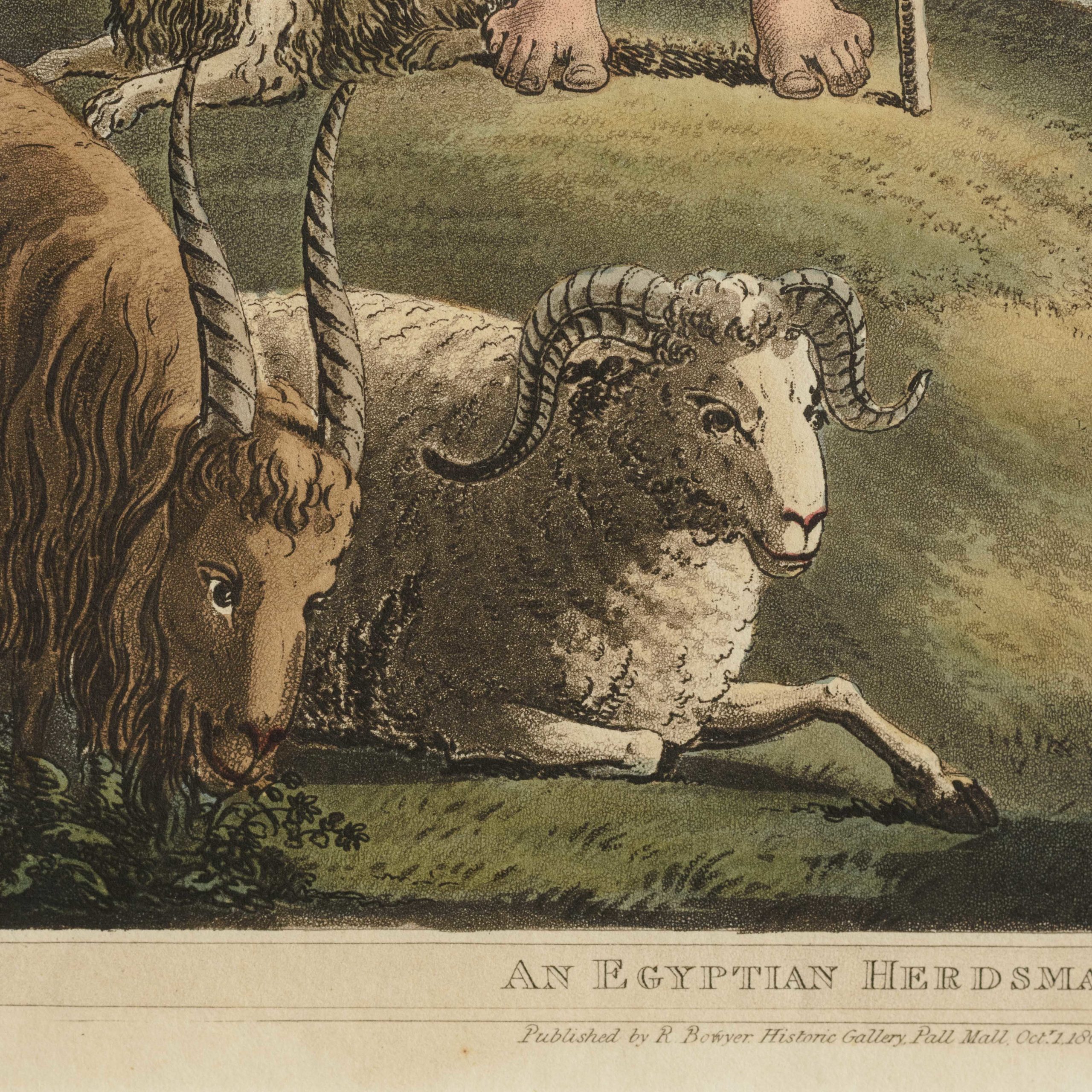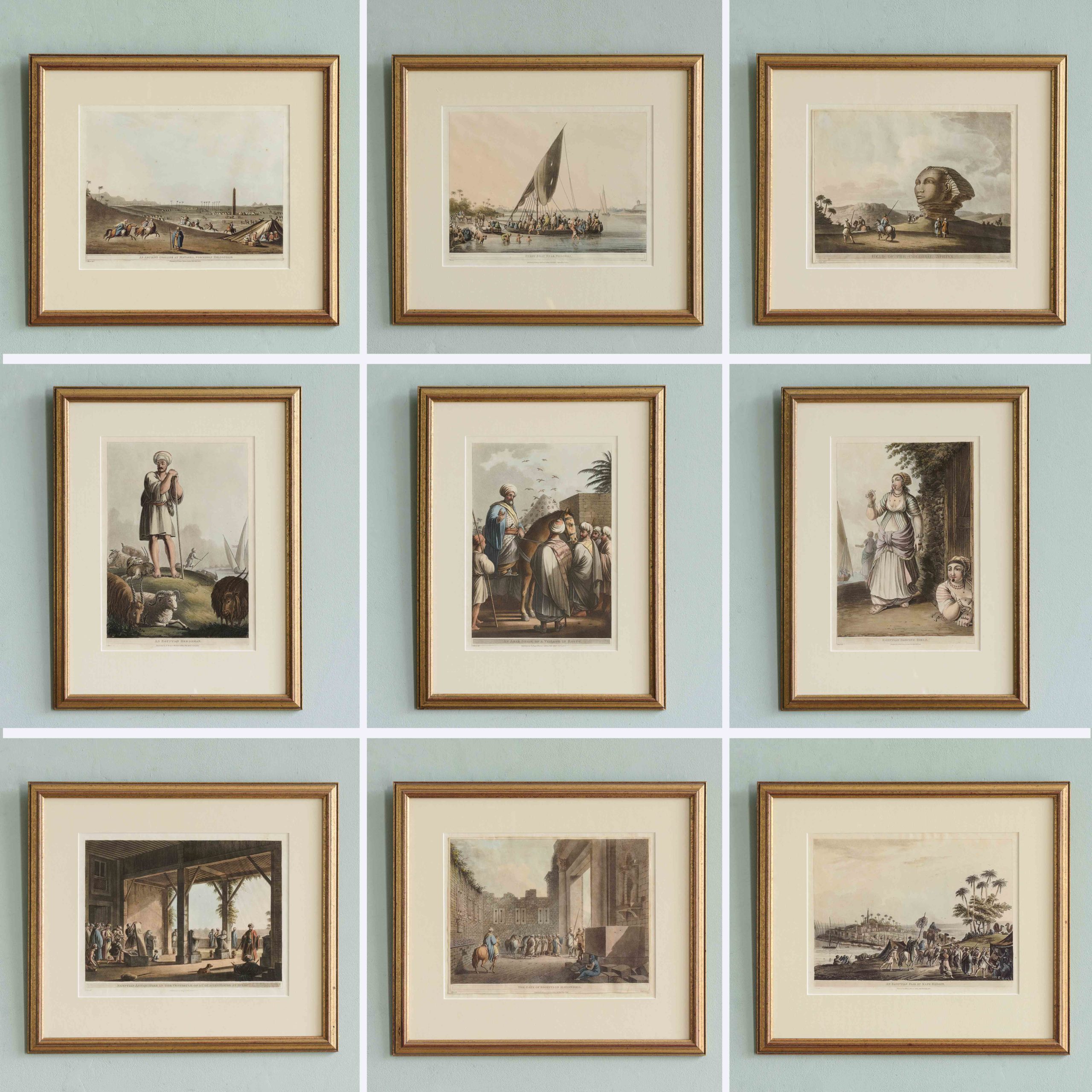Click and Collect – Please contact us to arrange collection or delivery of this item
Views in Egypt; original aquatints published 1804
Views in Egypt, Palestine and Other Parts of the Ottoman Empire by Luigi Mayer. Framed. 'An Egyptian Herdsman'.
£260 each
SOLD OUT
Out of stock
Luigi Mayer was a watercolourist and draughtsman. He was born in Germany, and lived for several years in Rome where he was taught by famed printmaker, Giovanni Battista Piranesi. In the late 18th century Mayer was employed by Sir Robert Ainslie a British ambassador to the Ottoman Porte, to produce drawings in Asia Minor and the Near East.
The drawings commissioned from Luigi Mayer, were used to produce coloured aquatint plates by Thomas Milton, printmaker, topographical draughtsman, who was the great-nephew of the poet John Milton.
When Mayer produced these images, Britain and France were vying for control of colonial territories, and these works captivated and informed audiences in Europe about the country’s culture and political structures. After Napoleon’s expedition to Egypt in 1798 Mayer’s publication became a bestseller when first sold in Britain in 1801.
Recently Viewed Items
-

A View from the Old South Sea House
£370A View from the Old South Sea House
A hand-coloured etching by the Regency satirist Richard Dighton showing the brewer James Curtis. Richard Dighton was the son and apprentice of another noted caricaturist Robert Dighton and brother of the battle-scene painter Denis Dighton. The works of Robert and Richard Dighton are regarded as predecessors of the Vanity Fair style of the late nineteenth century. The series of portraits of City and West End characters to which this etching belongs was started in 1817 and Dighton would go on to publish a number of etchings during the next decade before retiring early to Cheltenham. This edition, of 1824, was printed by Thomas McLean Printseller & Publisher at 26 Haymarket, on the eastern side just north of Panton Street. The subject of the print, James Curtis, was a prominent and prosperous London brewer of the early 19th Century and his portrait, painted by Thomas Lawrence, now hangs in the Manchester Art Gallery. The Old South Sea House mentioned was located on the Threadneedle Street corner of Bishopsgate. The back of it apparently burned down in 1826 and was subsequently rebuilt. The building was the headquarters of the South Sea Company. Incorporated in 1711, the company was assigned a monopoly on British trade with Spanish America but, when that failed, it embarked upon a speculative scheme that ended in the economic collapse known as the ‘South Sea Bubble’ which saw many investors ruined. The building was partly remodeled in the 1850s and was eventually demolished at the end of the 19th century£370




